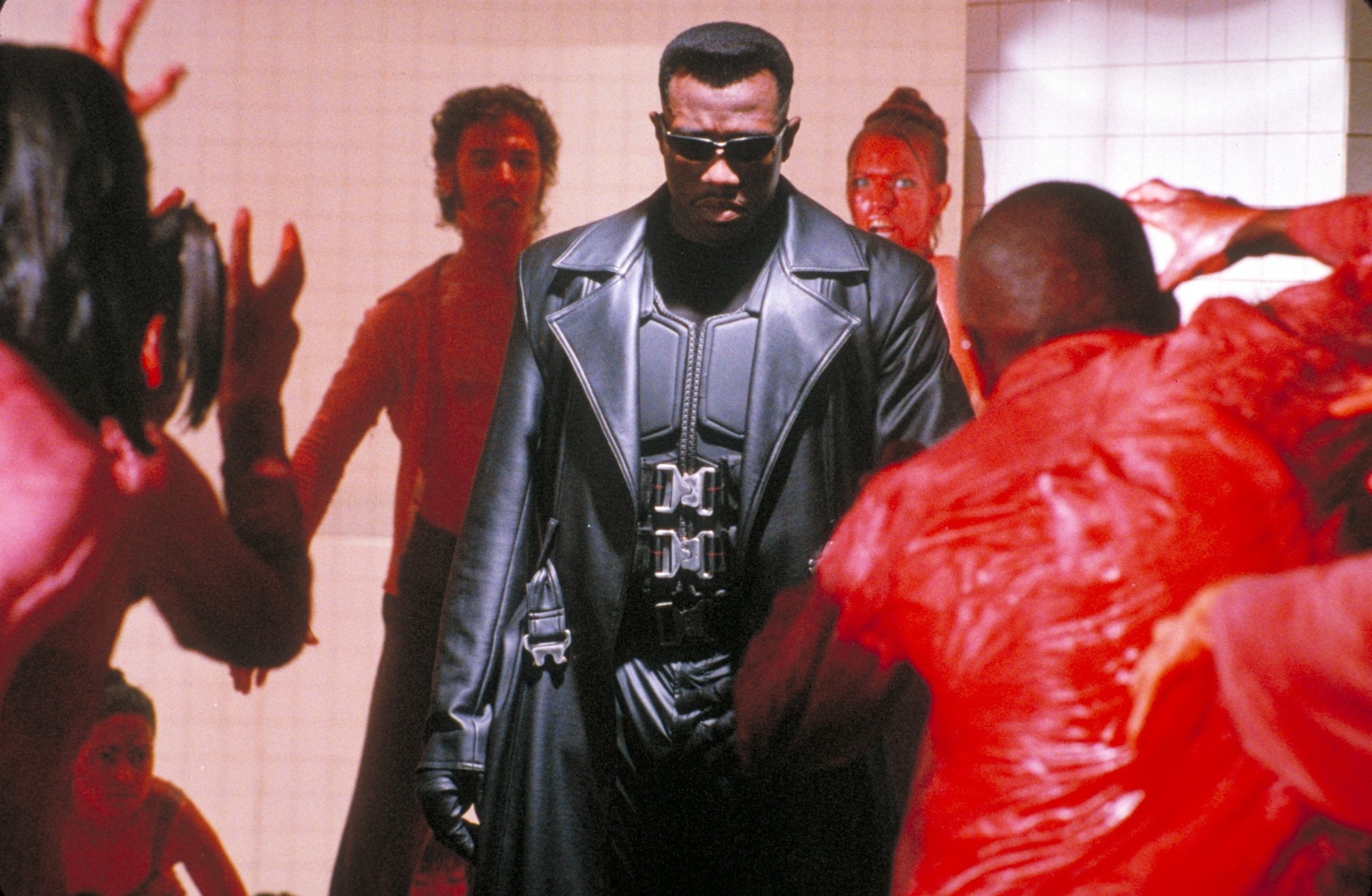Blade – Stephen Norrington (1998)

“Blade,” directed by Stephen Norrington and released in 1998, boldly reimagines the vampire mythos with a modern and gritty twist. Based on the Marvel Comics character of the same name, the film blends elements of horror, action, and superhero genres to deliver a visually stunning and thematically rich cinematic experience.
The narrative centers around Blade (played by Wesley Snipes), a half-vampire, half-human hybrid known as a “Daywalker.” Born with the strengths of vampires but without their weaknesses to sunlight, Blade dedicates his life to hunting and eliminating vampires who prey on humans. Assisted by his mentor and weaponsmith, Abraham Whistler (played by Kris Kristofferson), Blade wages a relentless war against the vampire underworld led by the powerful Deacon Frost (played by Stephen Dorff).

Central to “Blade” is its exploration of identity and duality. Blade grapples with his dual nature, torn between his human emotions and vampire instincts. Wesley Snipes portrays Blade with stoic intensity and martial arts prowess, embodying the character’s internal conflict and unwavering determination to protect humanity from the predatory undead.
Thematically, “Blade” challenges conventions of vampire lore established in classic literature and films. Unlike traditional vampires, who are portrayed as seductive and aristocratic figures, the vampires in “Blade” are depicted as ruthless predators who operate in the shadows of modern society. The film critiques themes of power, corruption, and immortality, as the vampire elite manipulate human institutions for their own gain.

Stephen Dorff’s portrayal of Deacon Frost adds a charismatic and rebellious antagonist to the narrative. Frost, a renegade vampire seeking to ascend to god-like status, represents a modern interpretation of villainy, blending ambition with a disdain for traditional vampire hierarchy. His conflict with Blade underscores the film’s exploration of generational divides and the clash between ancient traditions and contemporary rebellion.
Visually, “Blade” captivates audiences with its stylish cinematography, kinetic action sequences, and innovative special effects. The film’s use of practical effects and CGI enhances its dark and atmospheric tone, immersing viewers in a gritty urban landscape where danger lurks in every shadow. Director Stephen Norrington infuses the film with a distinctive visual flair that sets it apart from traditional vampire films of its time.

Moreover, “Blade” explores themes of redemption and moral complexity through its supporting characters. Abraham Whistler serves as Blade’s surrogate father figure and moral compass, providing guidance and emotional support amidst their dangerous missions. The film’s portrayal of their father-son dynamic adds emotional depth to Blade’s journey of self-discovery and acceptance.
In conclusion, “Blade” (1998) stands as a groundbreaking film that revitalized the vampire genre with its innovative approach to storytelling, dynamic characters, and visceral action sequences. Through its exploration of identity, duality, and the clash between human and vampire worlds, the film remains a cult classic that continues to resonate with audiences for its bold reinterpretation of vampire mythology and its enduring themes of heroism and sacrifice.











